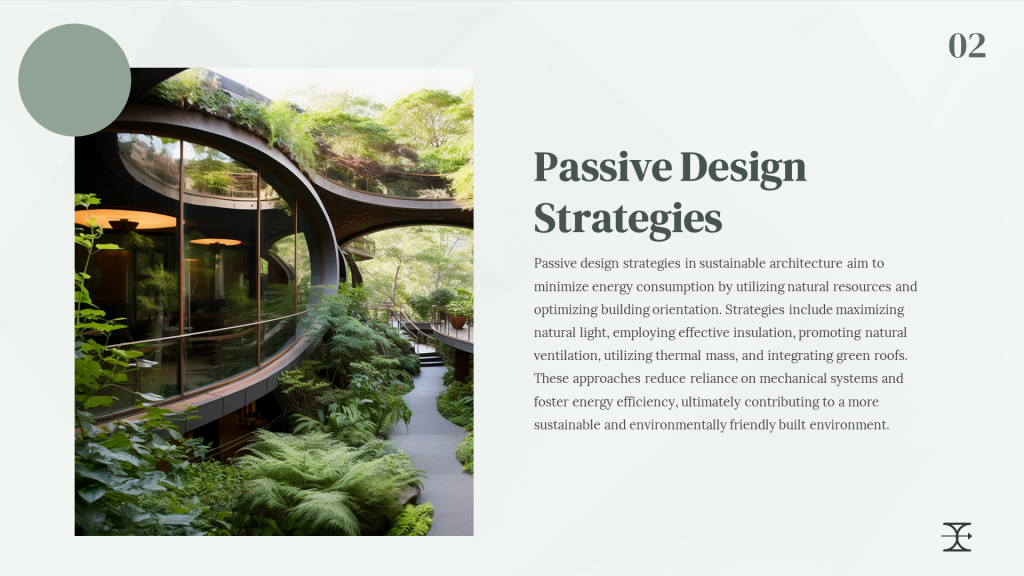Sustainability and Spatial Efficiency: How Minimalism Contributes to Greener Environments

The Growing Appeal of Minimalism
The 21st century has witnessed a dramatic shift towards a more conscious way of living, one that seeks to combat the detrimental effects of consumerism on both personal health and the planet. In this transformative landscape, minimalism emerges not just as a lifestyle choice but as a vital movement promoting sustainability. By consciously choosing to reduce excess, individuals can significantly contribute to a more harmonious relationship with the Earth.
How Minimalism Promotes Eco-Conscious Living
Minimalism’s eco-conscious approach is evident through several avenues:
- Less Consumption: Instead of purchasing items on a whim, minimalists emphasize making intentional choices. For example, instead of buying numerous fast fashion pieces, they may invest in high-quality clothing that lasts longer. This not only helps in lowering waste but also reduces the carbon footprint associated with manufacturing, transporting, and disposing of goods.
- Efficient Use of Space: Many minimalists opt for smaller living spaces, such as apartments or tiny homes. These compact areas typically require less energy for heating and cooling. For instance, owners of tiny homes often report significantly lower utility bills and a smaller ecological impact compared to those living in larger, more energy-consuming houses.
- Mindful Choices: Minimalists often lean towards sustainable products—those made from recycled materials, ethically sourced resources, or designed for longevity. By making these choices, they encourage companies to adopt greener practices and push for industry-wide change.
Wider Implications of Minimalist Living
Embracing minimalism extends its benefits beyond individual households. Research indicates that it can catalyze broader societal impacts:
- Decreased Resource Depletion: By reducing the number of items consumed, there’s less strain on natural resources, such as water and minerals. A composite of studies shows that minimalism can lead to declining extraction rates—benefiting ecosystems and preserving biodiversity.
- Lower Waste Generation: With fewer belongings, minimalists tend to produce less waste. In fact, studies indicate a direct correlation between minimalism and reduced landfill contributions, which is critical given that approximately 292.4 million tons of waste are generated annually in the United States alone.
- Enhanced Community Engagement: Minimalism may foster a communal spirit as individuals begin sharing resources—tools, books, or communal spaces. This transition not only builds stronger community ties but also emphasizes collective sustainability, as evidenced by the growth of tool libraries and community-sharing initiatives across urban areas.
Exploring Future Possibilities
The intersection of sustainability and spatial efficiency encourages exploration of innovative strategies for urban planning. Cities like San Francisco have seen an increase in co-housing initiatives and communal living spaces designed to promote both minimalism and environmental responsibility. Such movements exemplify how minimalist philosophies can create impactful changes, encouraging a ripple effect towards sustainability.
As awareness around sustainable living continues to expand, the principles of minimalism offer us tangible pathways to reimagine our consumption habits and foster a greener planet. Those ready to embark on this journey can find that less truly is more—not only for personal well-being but also for the health of our environment.

DISCOVER MORE: Click here to learn about innovative storage solutions
Impact of Minimalism on Personal and Planetary Wellbeing
The essence of minimalism lies in the deliberate act of simplifying one’s life, which starts with personal choices but ends up reverberating through societal structures. By shifting focus away from a consumerist mentality towards intentional living, minimalists not only enhance their own well-being but also forge a path towards a more sustainable future. This philosophy stands as a counter-narrative to the prevailing culture of excess, urging a re-evaluation of what is truly essential. As we explore the intricate relationship between minimalism and sustainability, several key aspects come to light.
Material and Environmental Benefits
One of the most notable benefits of minimalism is its potential for reducing environmental strain. Minimalist lifestyles correlate with reduced material consumption, leading to a decreased carbon footprint. Below are some of the distinctive material and environmental advantages:
- Resource Conservation: By prioritizing quality over quantity, minimalists often select durable, sustainable products that minimize the depletion of natural resources. A report from the World Economic Forum highlights that by cutting down on single-use plastics and embracing sustainable alternatives, individuals can significantly reduce greenhouse gas emissions linked to production and waste.
- Reduced Energy Usage: Smaller living spaces demand less energy for heating, cooling, and maintenance. According to the U.S. Department of Energy, downsizing can cut household energy use by as much as 40%, a substantial step towards cultivating a more energy-efficient environment.
- Waste Reduction: The minimalist ethos leads to a natural decluttering of one’s life, which directly contributes to waste reduction. A 2018 study by the Environmental Protection Agency (EPA) estimated that the average American generated about 4.9 pounds of waste per day. By embracing minimalism, individuals can work toward significantly lowering their personal waste production.
Psychological and Community Impact
Beyond material advantages, the minimalist movement fosters a profound psychological shift that can cultivate a sense of contentment and community engagement. Communities centered around minimalist principles often embody values of collaboration and resource-sharing:
- Improved Mental Clarity: With fewer distractions and possessions, minimalists often experience enhanced mental clarity and reduced stress levels. A survey conducted by the National Institute of Mental Health revealed that individuals with less clutter exhibited improved focus, illustrating the psychological benefits tied to a simpler life.
- Strengthened Community Bonds: Minimalism encourages resource-sharing initiatives, where individuals come together to exchange items or services. From communal gardens to sharing platforms for tools and appliances, these collaborative efforts not only reduce consumption but also enhance community resilience.
By embracing these values, minimalism can create a synergistic effect—where personal choices contribute to broader environmental goals. The shift towards a minimalist lifestyle represents a significant cultural change, one that points toward a sustainable and equitable future for all. As we delve deeper into the principles of minimalism and its impact on sustainable living, it becomes evident that the actions of individuals collectively shape the trajectory of our planet’s well-being.
Sustainability and Spatial Efficiency: How Minimalism Contributes to Greener Environments
In an era where environmental concern escalates daily, minimalism emerges as a powerful ally in the pursuit of sustainability. The minimalist approach not only advocates for reducing clutter but also emphasizes using fewer resources, leading to spatial efficiency. By designing spaces that prioritize utility and simplicity, we can significantly lower our carbon footprint.
Minimalism encourages the use of sustainable materials and energy-efficient designs. For instance, homes and commercial buildings that adopt minimalist principles often use natural light effectively, thereby reducing reliance on artificial lighting. Such practices not only minimize energy consumption but also enhance the overall living experience by creating more comfortable and healthier environments.
Moreover, minimalism promotes a lifestyle that values quality over quantity, encouraging consumers to invest in long-lasting products rather than disposable alternatives. This shift not only reduces waste but also fosters a culture of sustainability where individuals make conscious choices about their consumption patterns. As a result, the embrace of minimalism can lead to significant reductions in material usage and ecological degradation.
In urban planning, minimalism translates to efficient land use, prioritizing green spaces and promoting public transportation systems. This approach reduces dependency on vehicles and facilitates a healthier lifestyle through active transportation. Communities designed with minimalism in mind often feature compact elements that include parks, bike lanes, and communal areas, enhancing biodiversity and community interaction.
Ultimately, the principles of minimalism offer an innovative perspective on how we can achieve a more sustainable future. By embracing this philosophy, we can reshape our environments to promote health, efficiency, and moral responsibility towards our planet.
| Advantage Category | Description |
|---|---|
| Resource Conservation | Reduces waste through optimized space usage and fewer material needs. |
| Eco-Friendly Living | Encourages purchasing durable goods, decreasing landfill waste. |
| Enhanced Quality of Life | Promotes healthier environments with natural light and green spaces. |
LEARN MORE: Click here for more insights
Designing for Sustainability: The Architectural Role of Minimalism
As the discussion around sustainability becomes increasingly urgent, architecture and urban planning are integrating minimalism into their design philosophies. Minimalism’s influence extends beyond individual lifestyles, shaping broader ecological and spatial efficiencies within communities. This architectural shift is transforming spaces into leaner, more functional designs that prioritize both human and environmental needs. Some notable trends and their impacts include:
Efficient Use of Space
The minimalist design ethos inherently values space efficiency, which can lead to smarter use of land and resources. By prioritizing compact living arrangements, such as micro-apartments and tiny homes, developers can mitigate urban sprawl and preserve open spaces. A report by the National Multifamily Housing Council shows that micro-living solutions often consume 45% less energy on average compared to conventional apartments, highlighting the relationship between size and sustainability.
Green Building Practices
Architects are increasingly adopting green building standards that align with minimalist principles. For instance, many minimalist homes are constructed using renewable materials such as bamboo, which is not only sustainable but also exceptionally durable. With a focus on minimizing waste during construction, architects are able to lower their carbon footprints significantly. The U.S. Green Building Council underscores that LEED-certified projects—often inspired by minimalist design—can lead to a 20-30% increase in energy efficiency compared to non-certified buildings.
Nature Integration
Minimalism encourages an integrated relationship with nature, promoting designs that harmonize with the environment rather than disrupt it. Many architects are utilizing large windows, green roofs, and open floor plans to invite natural light and ventilation, ultimately reducing reliance on artificial lighting and HVAC systems. The biophilic design trends display how minimalist principles create spaces that enhance both well-being and ecological sustainability, seamlessly connecting indoor and outdoor environments.
Urban Planning Innovations
Minimalism’s principles are also infiltrating urban planning, urging cities to re-evaluate infrastructure and transport systems. Concepts like walkable neighborhoods and co-housing initiatives are gaining traction as they promote community and sustainability. A study from the American Institute of Architects found that cities focusing on walkability can reduce greenhouse gas emissions by up to 40% owing to less reliance on vehicles. This design approach fosters a sense of community while decreasing environmental footprints.
Challenges and Future Pathways
Despite its numerous advantages, the integration of minimalist principles in architecture and urban planning is not without challenges. Skepticism around the viability of minimalist lifestyles in urban settings can hinder their adoption. Additionally, the rising costs of sustainable materials may pose challenges to accessibility in certain communities. Nevertheless, these obstacles present an opportunity for further innovation and dialogue in the field. Continued collaboration among architects, designers, and urban planners can pave the way for robust solutions that address both societal needs and environmental concerns.
As we move towards a more sustainable future, embracing minimalist principles in architecture and urban planning will not only create greener environments, but also foster a culture of mindfulness and intentional living that transcends generations. The interplay between minimalism and sustainability is an evolving conversation worth exploring as communities strive for resilience and ecological balance.
DISCOVER MORE: Click here to learn about the power of natural light
Conclusion: Embracing Minimalism for a Sustainable Future
The integration of minimalism into our architecture and urban planning is not merely a design trend; it represents a fundamental shift in how we approach sustainability and spatial efficiency. By prioritizing compact living solutions and embracing green building practices, we are creating environments that significantly lower resource consumption and foster a deeper connection to nature. The innovative use of space, renewable materials, and an emphasis on community-oriented designs not only contribute to reducing our collective carbon footprint but also enhance the quality of life for residents.
As highlighted, urban planning innovations inspired by minimalism, such as walkable neighborhoods, present powerful strategies to combat climate change by reducing greenhouse gas emissions and promoting healthier lifestyles. Yet, the journey toward widespread adoption is accompanied by challenges that invite dialogue and collaboration among architects, urban planners, and community leaders. Acknowledging the barriers, from costs to cultural perceptions, can lead to creative solutions that ensure accessibility and inclusivity in sustainable designs.
In essence, the marriage of minimalism and sustainability invites us to rethink our priorities and actions. By cultivating a culture of mindfulness and intentional living, we not only pave the way for greener environments but also create resilient communities capable of thriving in balance with their surroundings. Moving forward, it is imperative that we champion these minimalist principles, enabling us to leave a lasting impact on our planet for future generations. As we explore this evolving relationship between minimalism and sustainability, the potential for transformation is boundless, urging us all to reconsider our place within the ecological tapestry of our world.


